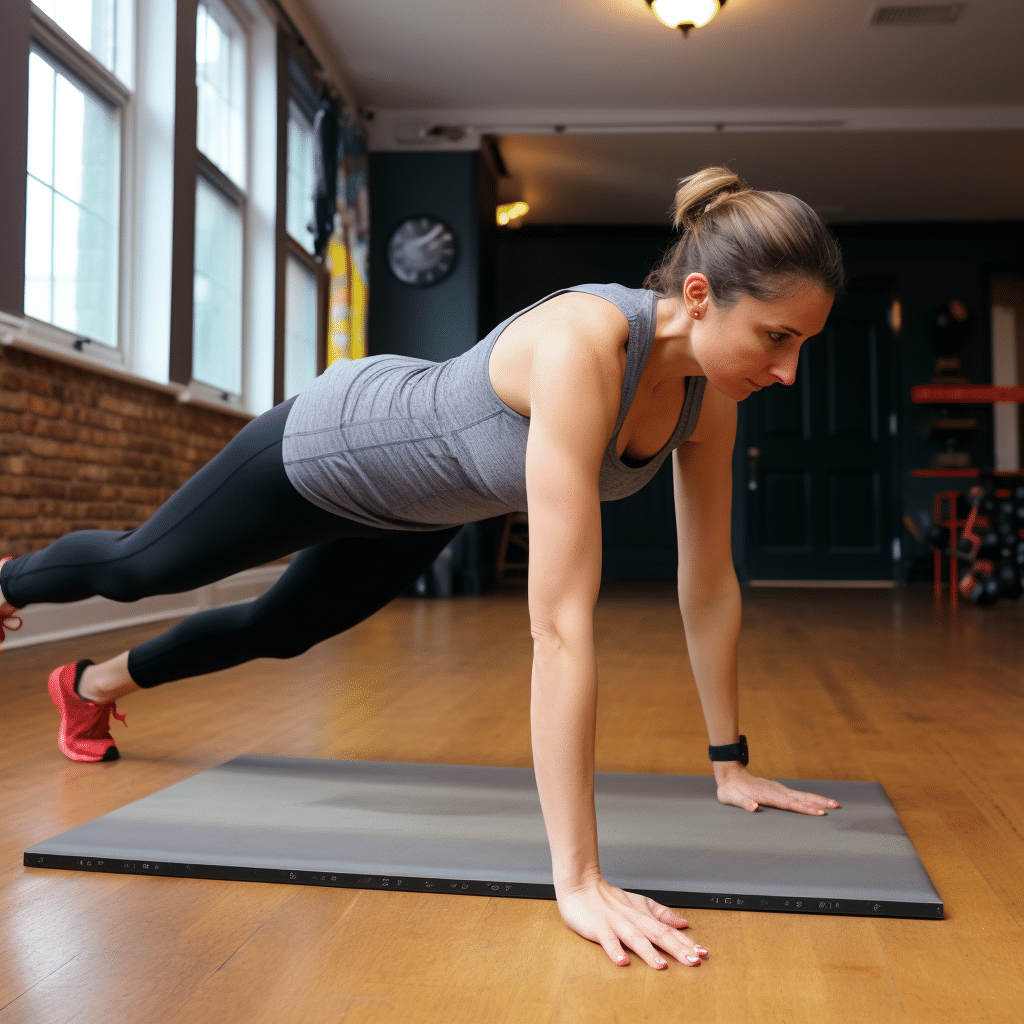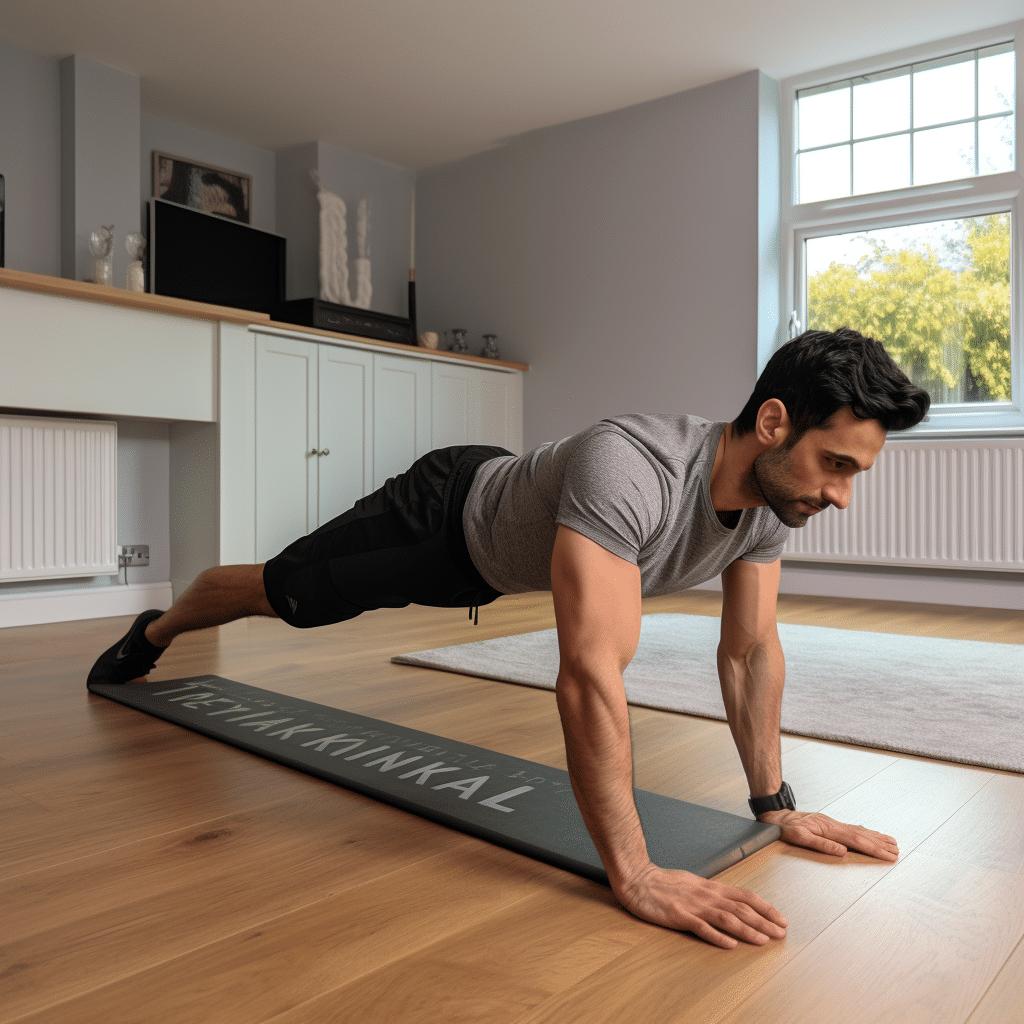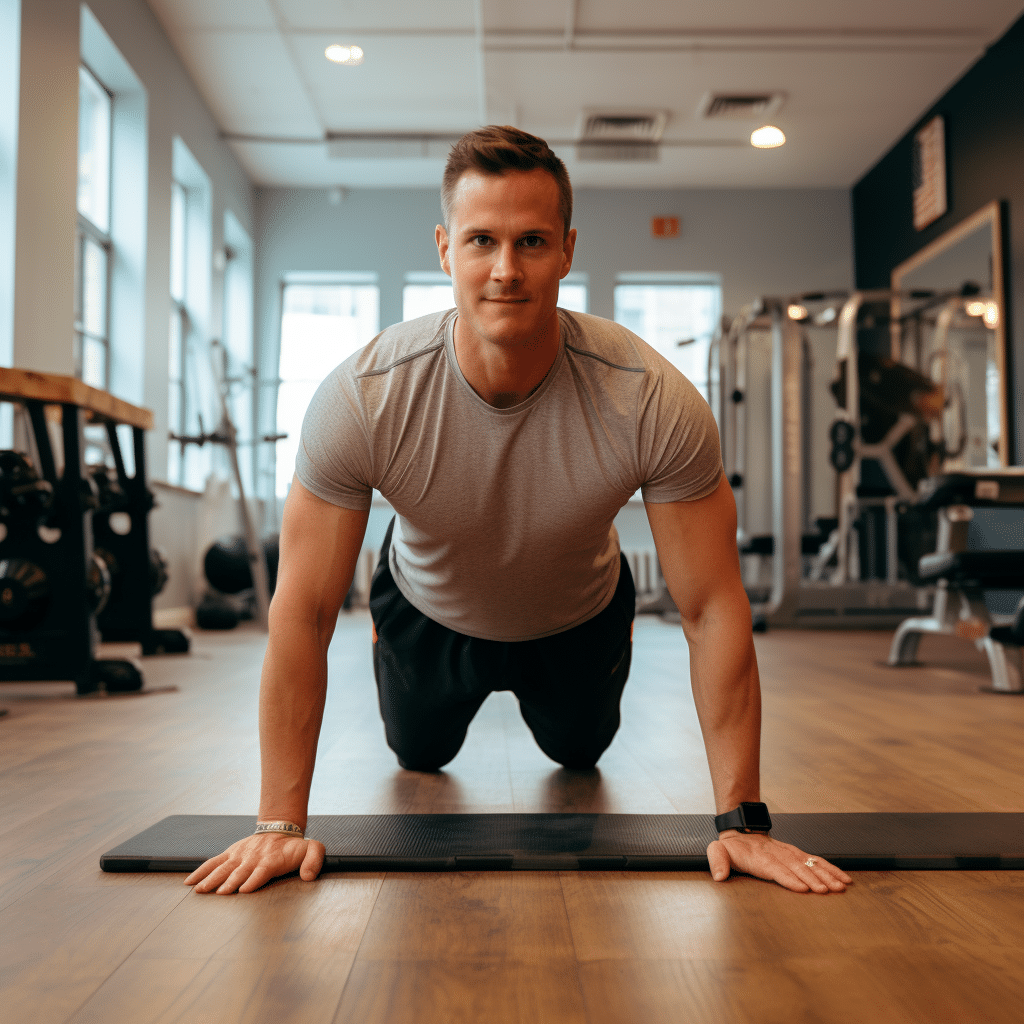Introduction
What Do Reverse Planks Work: Reverse planks, a lesser-known yet highly effective exercise, offer a unique twist to your fitness routine. While traditional planks target the front abdominal muscles and core, reverse planks put the spotlight on your posterior chain, engaging muscles in the back, glutes, and hamstrings. In the world of fitness, balance is key, and incorporating reverse planks into your workout regimen helps achieve that equilibrium. This exercise enhances your core stability, but it doesn’t stop there. It also offers a myriad of benefits, from improving posture to strengthening your back muscles and enhancing overall body flexibility.
As we delve into the realm of reverse planks, we’ll explore the muscles group they engage and the advantages they bring. We’ll proper form and technique, offer variations to tailor your routine, and unveil the remarkable ways in which this exercise can transform your fitness. So, let’s embark on this exploration of reverse planks and discover how they can work wonders for your body and well-being. Reverse planks, an underappreciated gem in the realm of fitness, add a fresh dimension to your exercise routine. While traditional planks are celebrated for their core-strengthening prowess, reverse planks offer a distinctive set of benefits by targeting the posterior chain of muscles.
A good fitness routine is important for a healthy life. Reverse planks help with this. They improve core stability and posture, which helps with everyday activities and sports. In this article, we will discuss the muscles they work and the benefits they offer. We will also show different versions for different fitness levels and goals, so you can customize your workout.
What are the benefits of reverse plank pose?
This pose is excellent for building strength in the arms, shoulders, and core muscles. It also helps to improve posture and increase flexibility in the spine. Additionally, purvottanasana can help to calm the mind and relieve stress.
Strength Building: Is an effective exercise for developing strength in the arms, shoulders, and core muscles. It targets these areas, contributing to improved upper body strength and overall stability.
Posture Improvement: Practicing this pose can aid in enhancing posture. It encourages an open chest and extended spine, helping to counteract the effects of sitting for extended periods and promoting better alignment.
Flexibility: Purvottanasana increases flexibility in the spine. The pose involves a backward bend, which can improve spinal mobility and alleviate stiffness, particularly in the thoracic region.
Stress Reduction: As with many yoga poses can have a calming and stress-relieving effect. Focusing on the pose, breathing deeply, and aligning the body can help calm the mind and reduce stress and anxiety. This pose encourages deep breathing, which can enhance lung capacity and oxygen intake, supporting overall respiratory health.
Is reverse plank harder than plank?
This is a normal straight-arm plank, just reversed. While a traditional plank targets the front of your body, this version targets the back of your body too, making it even harder. Begin seated on the floor with your legs straight out in front of you and your feet flexed.
Muscles Engaged: While both exercises engage core muscles, the reverse plank adds more emphasis on the muscles in your back, glutes, and hamstrings. This makes it a full-body exercise that works both the front and back of your body, which can be more demanding.
Shoulder and Arm Strength: In the reverse plank, you are supporting your body weight on your hands with your fingers pointing towards your feet. This places more strain on your wrists, shoulders, and arms compared to the traditional plank, where you rest on your forearms or hands with palms down.
Backbend: The reverse plank involves a mild backbend, which requires flexibility in the spine. It can be more challenging for individuals who have limited flexibility in the back. Maintaining balance in the reverse plank can be more demanding due to the position of your body. It requires good core stability and coordination.

Does reverse plank reduce thigh fat?
One of the most effective movements to lose thigh fat is reverse plank. Look up to the ceiling, point your toes by keeping your arms and legs straight. Keep your entire body strong and form a straight line from head to toe. Squeeze your core and try to pull your belly button back toward your spine.
Spot Reduction Myth: It’s a common misconception that you can reduce fat in a specific area of your body by targeting exercises for that area. In reality, spot reduction is not an effective way to lose fat. Fat loss occurs uniformly throughout the body when you create a calorie deficit through a combination of diet and exercise.
Muscle Toning: While reverse planks can help tone and strengthen the muscles in your thighs, they primarily focus on the muscles in the upper body, core, and posterior chain. They can improve muscle definition and strength but won’t lead to significant fat loss in the thighs. Proper nutrition is a crucial factor in fat loss. Reducing overall calorie intake, focusing on a balanced diet, and maintaining a calorie deficit are key components of successful fat loss.
Comprehensive Fitness: To reduce fat in the thighs and achieve overall fat loss, a combination of cardiovascular exercises (such as running, cycling, or swimming) and a balanced diet is essential. Cardiovascular exercises help burn calories, leading to a calorie deficit, which in turn results in fat loss from various areas of the body, including the thighs.
Can I do a reverse plank everyday?
Flip reverse the standard straight-arm or forearm plank and you’ve got reverse planks. Like many plank variations, this move targets your core, namely the rectus abdominis or “six-pack” muscles, shoulders, arms, back, glutes, and legs.
Listen to Your Body: Pay attention to how your body responds to daily reverse planks. If you experience discomfort, pain, or excessive muscle soreness, it may be a sign that you need more rest between sessions. Incorporate rest or recovery days into your routine. These days can help your muscles recuperate and prevent overtraining.
Variation: While reverse planks are effective, it’s beneficial to vary your exercises to prevent overuse injuries and to engage different muscle groups. Consider alternating reverse planks with other core-strengthening exercises to create a balanced workout routine.
Proper Form: Ensure that you are maintaining proper form during reverse planks. Incorrect form can lead to injuries. If you notice that your form is deteriorating due to fatigue, it may be a sign that you need a break. If you’re doing reverse planks daily, consider progressing your routine gradually. You can increase the duration or intensity over time to continue challenging your muscles.
Does reverse plank improve posture?
We believe that the reverse plank exercise significantly improved the ability to prevent FSP in FSP-related muscles and was beneficial in achieving optimal postural alignment.
Strengthening the Back: Reverse planks target the muscles in your upper back, shoulders, and posterior chain. By strengthening these muscles, you can counteract the effects of rounded shoulders and a hunched upper back, which are common contributors to poor posture.
Thoracic Mobility: The reverse plank involves a backbend, which can improve flexibility and mobility in the thoracic spine. A more flexible upper back allows for a more upright and natural posture.
Core Engagement: To maintain the reverse plank position, you need to engage your core muscles. A strong core provides stability and support to your spine, helping you maintain an upright posture.
Balancing Anterior Muscles: Many individuals have overdeveloped anterior muscles (such as the chest) due to activities like sitting at a desk or using smartphones. Reverse planks can help balance this by strengthening the posterior muscles.
Are reverse planks better on elbows or hands?
If you have wrist problems, you can do this exercise with your elbows and forearms on the floor. Instead of placing your palms slightly behind and outside your hips, put your elbows in this same general spot and perform the reverse plank in this position.
Performing reverse planks on your hands, with your palms slightly behind and outside your hips, is the traditional variation of the exercise. This position requires more wrist flexibility and strength to support your upper body. It engages your shoulders, arms, and wrists in to the core and lower body muscles.
Some people may find the hand position more challenging, especially if they have wrist discomfort or limited wrist flexibility. If you have wrist problems, performing reverse planks on your elbows and forearms is a suitable alternative.
This position reduces the stress on the wrists and can be a more comfortable option if you have wrist pain or conditions like carpal tunnel syndrome. The exercise primarily targets the same muscle groups, including the core, shoulders, arms, and lower body, but with a more wrist-friendly approach.
What muscles do reverse planks work out?
Among the different plank exercises, the reverse plank focuses on the posterior muscles used in core strength and engages the abdominal muscles when done properly.
Triceps: The triceps, located on the back of the upper arm, are engaged when you support your body weight on your hands or forearms in the reverse plank position. Reverse planks activate the deltoid muscles in the shoulders, contributing to improved shoulder strength and stability.
Back Muscles: The exercise engages various muscles in the upper and lower back, including the latissimus dorsi and the erector spinae, which help with spinal extension and posture. Reverse planks work the gluteus maximus, the large muscle of the buttocks.
Hamstrings: The hamstrings, located on the back of the thigh, are involved in extending the hips and supporting your lower body in the reverse plank position. Strengthening these muscles can improve hip stability and overall lower body strength.

Conclusion
Reverse planks, a lesser-known gem in the world of fitness, have a remarkable impact on the body’s posterior chain and overall strength. In our exploration of this exercise, we’ve delved into the numerous muscle groups it engages and its transformative potential. As it’s clear that reverse planks are a versatile exercise that targets the triceps, shoulders, back muscles, glutes, hamstrings, and core. By honing these muscle groups, reverse planks contribute to improved upper body strength, enhanced posture, and balanced muscle development. Sets reverse planks apart is their ability to create a well-rounded fitness routine that addresses both the front and back of the body. They challenge the muscles that are often overlooked, offering a holistic approach to strength training.
Reverse planks can make you stronger, improve your posture, and help with daily activities. Try the exercise for yourself to experience the benefits. It’s a hidden treasure in fitness and has many advantages for your body. By doing this exercise, you engage different muscles and transform your body.
Reverse planks are a versatile exercise that targets the triceps, shoulders, back muscles, glutes, hamstrings, and core. By developing these muscle groups, reverse planks foster improved upper body strength, enhanced posture, and a well-rounded muscular foundation. Sets reverse planks apart is their capacity to create a balanced fitness routine. They challenge oft-neglected muscles, presenting a holistic approach to strength training. The gentle backbend of the reverse plank simultaneously enhances thoracic spine flexibility, cultivating better posture and spinal health. Incorporating reverse planks into your fitness regimen can result in a more robust, stable body, improved posture, and increased capability to tackle daily activities effortlessly.

